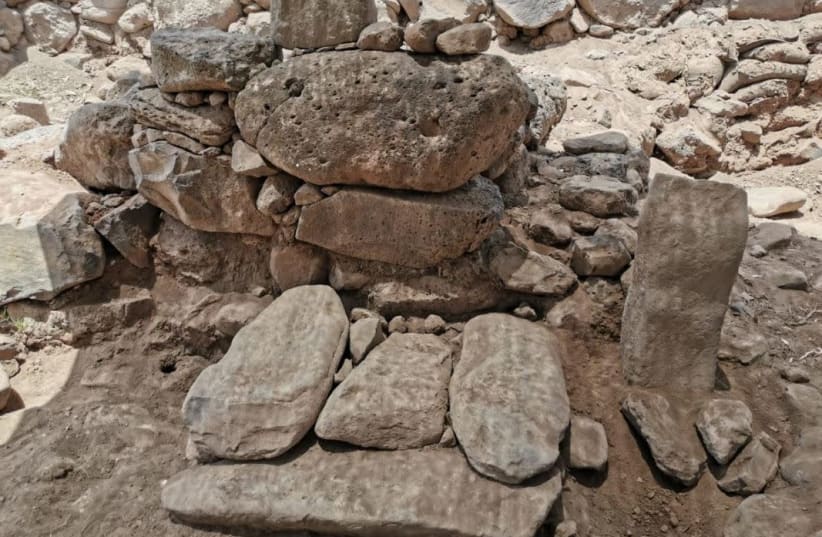A rare stone stele dating back to the kingdom of Geshur was unearthed in an archeological excavation, the excavation team reported on Monday.The stone stele bore the image of their bull shaped moon-god, which dates back to the 11th century BCE.
The kingdom of Geshur is mentioned in the bible as having co-existed alongside the kingdom of David. It was eventually annexed by king Hazael, who ruled what is today modern-Syria. The biblical kingdom of Geshur existed in parts of what is now the Golan Heights.
The work, led by Professor Rami Erev in Bathsaida, was carried out by a team of students from around the world, including the US and China. The stele, or stone slab, which was found was a funeral one. Such monuments were used in the ancient world for a variety of needs, from guiding the souls of the dead to marking roads and even territorial borders. In 2018 the site Ein Keshatot in the Golan was reopened after 15 years of reconstruction. Prime Minister Benjamin Netanyahu, who attended the opening, said that “Israel [being] in the Golan is a fact."
